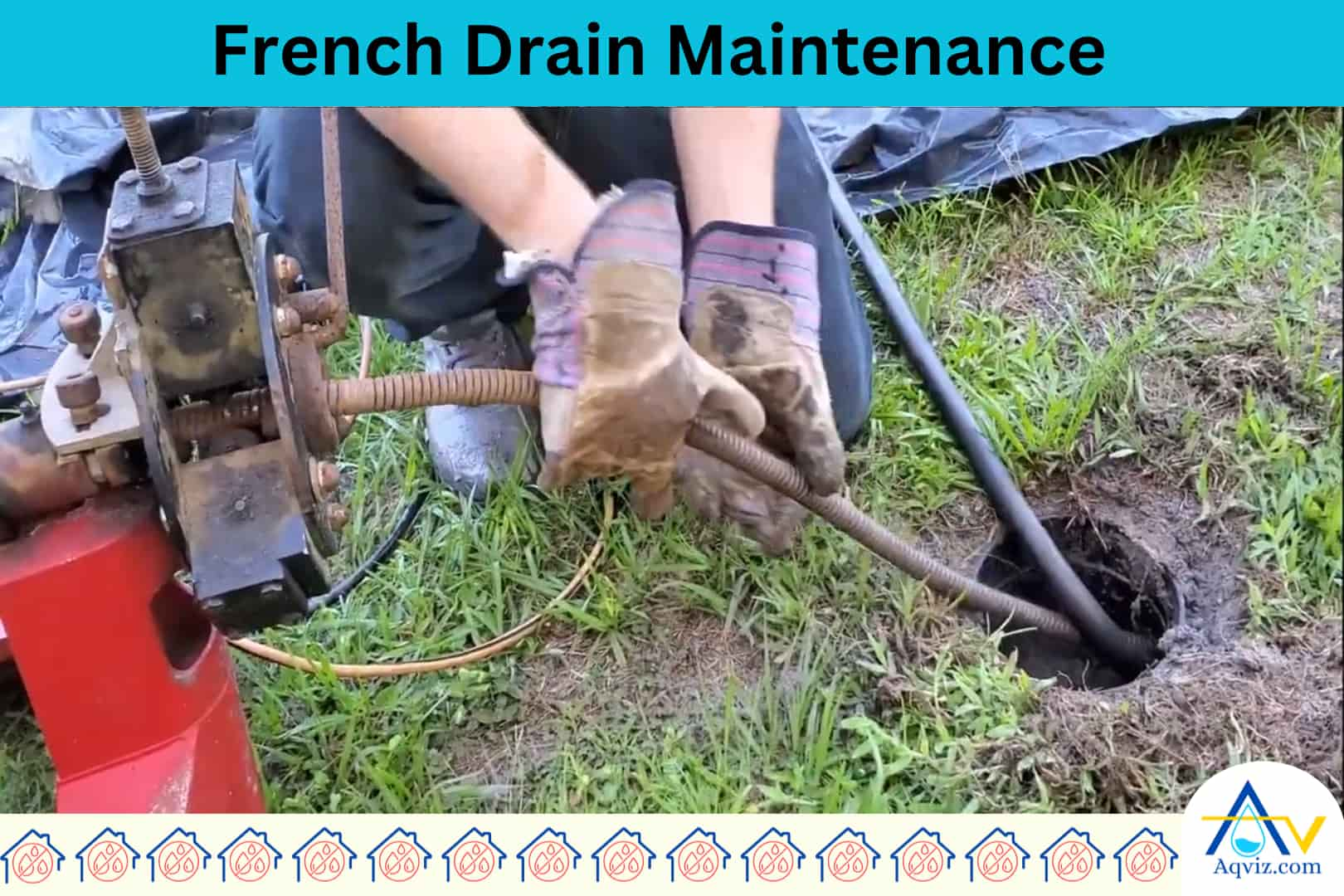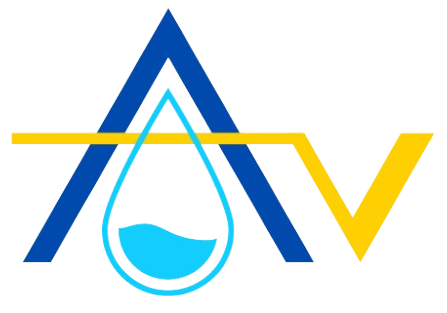French Drain Maintenance: Inspection, Cleaning and Repairing

French drain maintenance is a combined process of routine inspection, cleaning, and occasional repair of a French drain system to keep it functioning properly.
To maintain a French drain, you should inspect the system at least once every 1 to 2 years. You should use a proper inspection method for the French drain, as it is not missing anything. During the inspection process, if you identify any water-related damage or problems in the French drain area, it will be a strong indicator that your French drain needs cleaning or repair.
French drain maintenance requires specific tools and materials. But it depends on the expertise of the user. During the French drain cleaning process, you should flush it with a hose or jetter. Then you can identify the reason, and then you should remove roots and tough debris from the drain.
If there is any damage, like a collapsed drain pipe or geotextile damage, you should repair or replace it properly according to the hazard level. In order to prevent future clogs, you should take relevant action to protect the French drain system.
How to Inspect a French Drain?
To inspect a French drain properly, you should follow a detailed, step-by-step process. Aqviz experts follow these 9 steps to identify clogs, water flow issues, and early signs of system failure in the interior French drain .
You should follow these 9 key steps to inspect the interior French drain
- Ensure safety by wearing gloves, safety glasses, and boots before starting the inspection.
- Check surface signs for standing water, soggy soil, or erosion along the drain path.
- Inspect drain inlets by clearing leaves or mulch from grates or catch basins, and confirm there is a proper slope in the French drain.
- Look for trench collapse, saturated soil, or sunken areas along the French drain pipe path.
- Check cleanouts by opening caps and inspect for sediment, root growth, or blockage inside the French drain pipe.
- Check the rock bed for compacted mud, root invasion, or missing landscape fabric.
- Inspect basement drains for mold, efflorescence, or seepage along wall-floor joints.
- Inspect the discharge outlet to confirm the outlet is not buried, blocked, or causing erosion.
- Look for signs of failure of mold, pooling, reverse pipe slope, or disconnected outlets in the French drain.
But if you inspect the exterior French drain, you can’t do it like this.
How often Should You Inspect a French Drain?
You should inspect a French drain at least once every 1 to 2 years to ensure it remains functional and free of clogs or structural issues. French drain inspection helps to identify the early signs of sediment buildup, root intrusion, or drainage failure before they escalate into costly repairs.
You should also inspect the system immediately after abnormal water behavior, such as pooling near the foundation, slow yard drainage, or musty odors in the basement. After heavy rainfall or flooding events, a quick inspection can help verify that water is properly flowing from the inlets to the discharge outlet without backup.
What Are the French Drain Signs That Need Cleaning or Repair?
After you inspect the French drain, you may see the following 8 signs. Those are the clear indicators that your French drain needs cleaning or repair.
- Standing water near the trench line
- Slow-draining catch basin
- Overflowing surface grates
- Soggy or sunken soil above the trench
- Water bypassing the system and pooling near the foundation
- Sediment or roots inside cleanout ports
- No water flow at the discharge outlet during rain or hose testing
- Visible mold, efflorescence, or seepage along basement wall-floor joints
What Tools and Equipment Are Needed for French Drain Maintenance?
To perform French drain maintenance, you should have the right tools based on whether you’re a homeowner doing basic cleaning or a professional performing full inspections and repairs. Each set of tools serves specific tasks like flushing, inspecting, or unclogging the drain system.
For homeowners , you should have below 6 tools for French drain maintenance.
- Garden hose with high-pressure nozzle
- Small shovel or hand trowel
- Bucket or wet/dry vacuum
- Flashlight or inspection mirror
- Gloves, work boots, and safety glasses
- Rake or broom for clearing surface debris
For professionals , you should have below 6 tools for French drain maintenance.
- Drain jetter hose (rated 1,500-4,000 PSI)
- Plumbing snake or powered drain auger
- Pipe inspection camera
- Moisture meter for soil and foundation walls
- Trenching tools and cleanout access keys
- Sump pump tester or water flow meter

How to Clean a French Drain?
Aqviz experts recommend these 7 steps to clean a French drain.
- Gather relevant cleaning tools and materials
- Locate the cleanout or drain outlet
- Flush the line with the garden hose or jetter
- Use a plumbing snake or auger for tougher clogs
- Clean the outlet and catch basin
- Backflush the French drain if accessible
- Maintain landscape and surface conditions
Read More About: How to Clean a French Drain?
How to Flush a French Drain with a Hose or Jetter?
To flush a French drain properly, you should begin at the cleanout port or discharge outlet, where water can be safely pushed through the system without forcing debris deeper. Flushing helps remove silt, algae, and light blockages that reduce flow efficiency.
You should insert a garden hose with a high-pressure nozzle or a drain jetter hose into the opening. Turn the water on full pressure and slowly feed the hose forward, working in short back-and-forth motions to break up debris.
If using a jetter, set the pressure between 1,500 and 4,000 PSI, depending on the pipe material. Continue flushing until clear water exits from the opposite end. For longer systems, you should repeat the process from both inlet and outlet points. After flushing, inspect the discharge outlet to confirm consistent flow and remove any remaining surface debris.
How to Remove Roots and Tough Debris from French Drains?
To remove roots and tough debris from a French drain, you should use a plumbing snake with a cutting head or a motorized drain auger to break through root masses. Insert the cable into the cleanout and rotate it slowly while feeding forward to shred roots and loosen compacted debris.
If roots are widespread, you should follow up with a high-pressure jetter hose to flush out loose material. In severe cases, the affected section of the pipe may need to be excavated and replaced. After removal, you should inspect the trench for root entry points and install root barriers or re-wrap the pipe in filter fabric to prevent regrowth. Regular maintenance helps avoid full system blockages and water backups.
How to Repair a Collapsed Drain Pipe
To repair a collapsed French drain pipe, you should first locate the exact point of failure by observing surface signs such as sunken soil, water pooling, or loss of flow at the discharge outlet. Use a pipe inspection camera or probe rod along the trench line to confirm the damaged section.
Once identified the collapsed drain pipe area, you should excavate the trench carefully around the collapsed pipe. Remove the surrounding gravel and cut out the damaged pipe section using a PVC cutter or saw. Inspect the trench base to ensure it’s still compact and properly sloped.
You should then replace the damaged portion with a new perforated pipe of the same diameter, secured with slip couplings or connectors. Wrap the repair section with geotextile fabric, and backfill with 3/4 inch angular gravel, maintaining a minimum 1% slope. Compact the gravel in layers and cover with fabric before finishing with soil or sod.
When to Replace Geotextile or Drain Rock
You should replace geotextile fabric or drain rock when they show signs of clogging, contamination, or physical deterioration that restricts water flow. If you see mud-packed gravel, root intrusion, silt buildup, or water pooling along the trench line can be a damaged geotextile fabric.
To replace it, you should excavate the affected trench section, removing all old gravel and debris. Cut away the deteriorated geotextile and inspect the pipe for blockages or damage. Lay new non-woven, needle-punched geotextile fabric inside the trench, ensuring it lines the bottom and sides. Refill with clean 3/4 inch angular gravel, rewrap the top with the fabric, and backfill with soil.
For small sections, you can apply a spot repair by digging only the clogged area and patching with new fabric and gravel. However, full trench replacement is more reliable when contamination is widespread.
How to Prevent Future French Drain Clogs?
Aqviz experts highly recommend following these proven prevention 10 methods to keep your French drain flowing efficiently and avoid costly clogs over time.
- Use washed, angular gravel to maintain proper drainage voids and reduce compaction.
- Install non-woven geotextile fabric around the pipe and gravel to block sediment entry.
- Avoid pea gravel or unwashed stone, which easily traps soil and debris.
- Grade the trench with a minimum 1% slope to ensure steady water flow.
- Keep surface inlets and grates clear of leaves, mulch, and yard waste.
- Trim nearby roots and vegetation that may penetrate the pipe or gravel bed.
- Extend downspouts away from the drain to reduce sediment-heavy water entering the system.
- Flush the system annually with a garden hose or jetter to clear fine buildup.
- Check discharge outlets regularly to confirm water flows freely.
- Inspect cleanout ports for early signs of root or silt blockage.
Read More About: How to Unclog a French Drain?
How Long Should a French Drain Last?
A well-installed French drain can last 30-50 years with proper maintenance. But it depends on the quality of the material, proper workmanship, regular maintenance, avoiding external forces, use effective waterproofing in the basement. By following these steps, you can maximize your French drain’s efficiency and ensure it protects your home for decades.
- Use durable PVC or high-density polyethylene (HDPE) pipes instead of corrugated plastic for French drains.
- Ensure the drain is correctly sloped (1% gradient), well filtered, and backfilled with clean gravel to prevent clogging in the basement.
- Flushing the French drain, clearing debris, and checking for root intrusion significantly extend its lifespan.
- Do not drive heavy machinery over buried French drains, as this can crush the pipes.
- Maintain the sump pump regularly to prevent sudden breakdowns during heavy rainfall.
What is the difference between a French drain and a Footing drain?
The French drain is designed to redirect surface water and groundwater away from low-lying areas, yards, or basements while a footing drain is specifically installed at the base of a foundation to prevent water from seeping into the basement or crawl space. The French drain is installed with gravel and perforated pipe and the sump pump is connected to a sump pump or drainage system to actively pump water away.
What are the 10 types of French drains?
These are the 10 types of French drains that you can use in your basement.
- Traditional perforated pipe french drain
- Curtain drain
- Trench drain
- Interior french drain
- Exterior foundation drain
- Gravel french drain
- Surface french drain
- Subsurface french drain
- Sump pump-assisted french drain
- The downspout connected to the French drain
Aqviz experts have prepared a complete guide about these French Drain types.
Read more: What are the 10 Types of French Drains?
